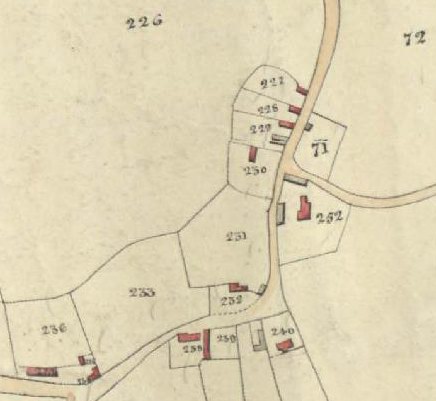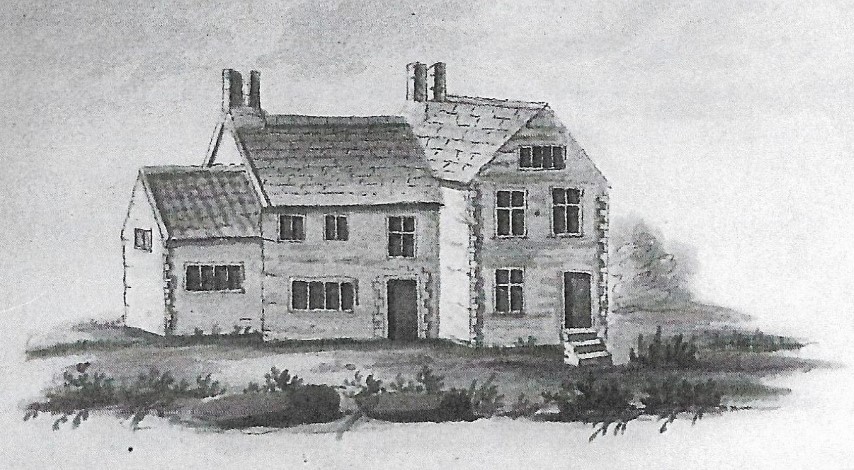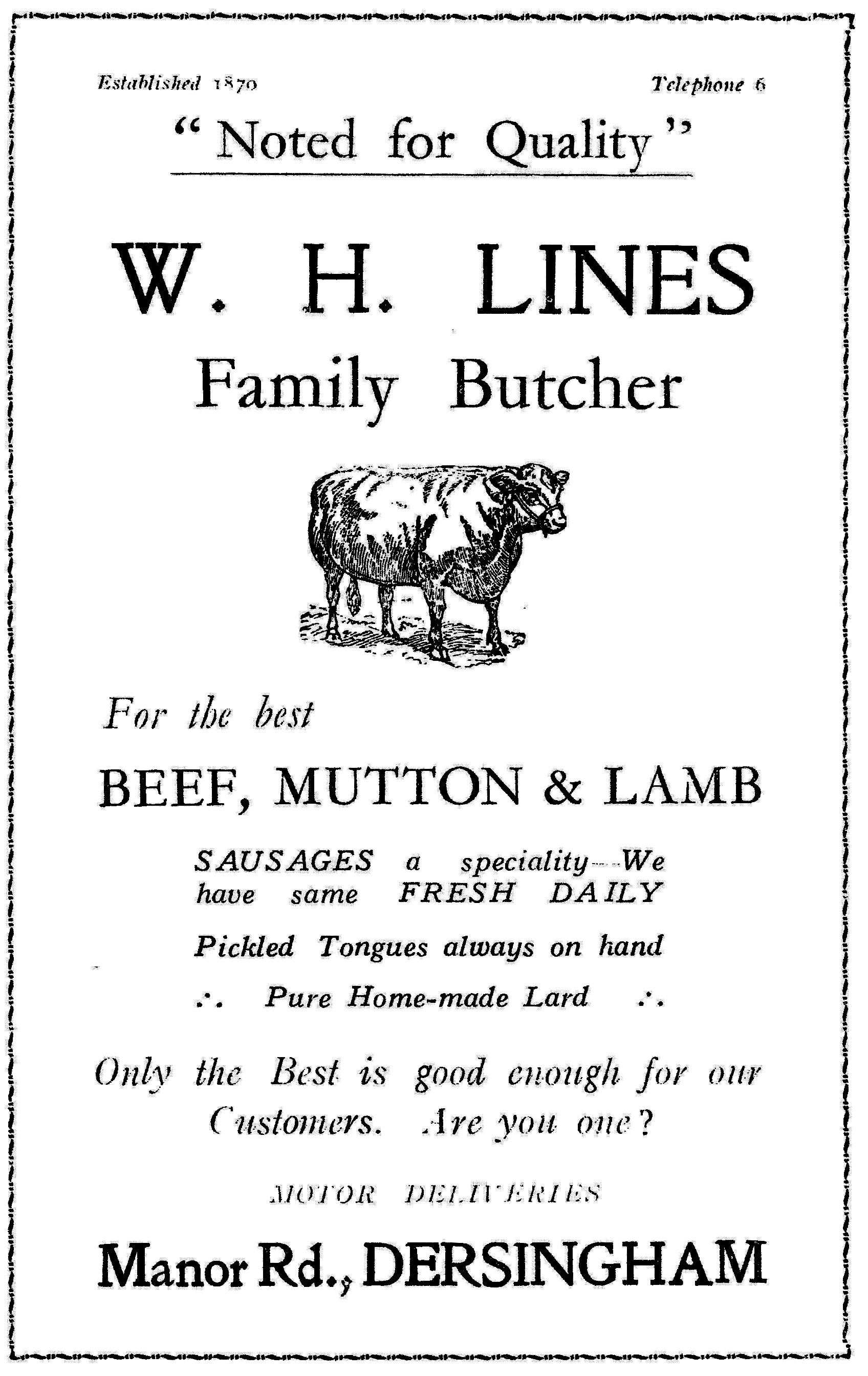In Kelly’s Directory of 1845 we find Lydia Petchey now recorded as the victualler of The Coach and Horses so obviously the shop of 1839 has become a public house. At some point, I suspect at about the same time the Cock Inn was replaced by the larger Feathers Hotel, it too was greatly enlarged possibly when Thomas Taylor was the Publican. In recent times the old barn that once stood to the left of the pub was demolished to enlarge the car parking area. So the Public House and car park now occupy the area where once Lydia’s house and shop stood.
Three of the cottages are still there although probably also much changed. Certainly the one on the left, at right angles to the road, has been greatly altered comparatively recently.
Lydia Petchey died in 1851 aged 66. Her husband Benjamin, a wheelwright, had died in 1838, and both their gravestones can be found in the church yard side by side.
The census of 1851 records that William Hotchin has taken over as Innkeeper of The Coach and Horses. He is living there with his wife Elizabeth, his elderly father William and Emily Greenacre is their house servant. William and his wife were both born in Congham while his elderly father, formerly a farmer, originated from Little Massingham.
William is recorded in Kelly’s Directory of 1854 not only as the Proprietor of the Coach and Horses but is also still listed as a butcher. He is still recorded in 1856 as the Innkeeper of The Coach and Horses but by 1858 Thomas Taylor was the new Innkeeper.
Mike’s research revealed that in 1861 William and his wife were then living in the lodging house of one Hannah Cross in King’s Lynn. Hannah’s son James, a mariner was living there also. So some time after 1856 William Hotching left Dersingham to live in Lynn. So who took over the shop?
In the census of 1861 we find an answer. William Waters, aged 29 born in Swaffham, is recorded as a Butcher with one employee. He lives with his wife Susannah, born in Wisbech, and a very young niece, Fanny Coe just 2 years old. She was born in Ingoldisthorpe. Emma Mitchell a general servant completes the household. I base my belief on this being the new owner of the Doddshill shop on the fact that as well as fitting the criteria for running the shop, the very next entry in the census is for The Coach and Horses and the entry immediately before was for Church Farm. I realise that the enumerators of census returns were frequently extremely erratic in their listings and did not always follow a logical order for entries but I think this time the evidence is strong and can be seen in future entries. So sometime between 1856 and 1861 William Waters came to the village to run the Butcher’s shop.
Ten years later in 1871 William Hotching and his wife are living in Lynn but now in their own house with a Matilda Fowler as a boarder.
William Waters is still recorded as the butcher employing 2 men. One of his employees is Frederick Terrington, a slaughterman. It was the usual practice then for local butchers to slaughter animals themselves. In later records the premises are described as a shop with abbatoir. The large barn complex at the side of the shop clearly served this purpose.
When I first came to the village there was a butcher’s shop in Chapel Road, by the traffic Lights, called Scoles, previously Towers Butchers. At the side of the shop was a small stone barn that was still being used as an abbatoir at that time. Regulations changed shortly after and these small abbatoirs became a thing of the past and the old barn was demolished to make way for a garage. Today of course it has all been replaced by pleasant residential housing.
In 1872 records show that Elizabeth Hotching had died in King’s Lynn.
By the time we reach 1881 there has been a further change here in Dersingham. Now we find Francis Rands, 26, born in Northants, listed as the Master Butcher, employing 1 boy. He lives with his wife Elizabeth, born in King’s Lynn, and their young son Frank, just 1 year old. Lillie Balding of Dersingham is their general domestic servant.
Just like the earlier entries the next listing is for the Coach and Horses and the previous entries are for Church Farm and cottages. So again I believe this to be Doddshill shop.
However, the employment of Frederick Terrington as a slaughter man, aged 22, by William Waters in 1871 is interesting because in the 1881 census we discover a Frederick Terrington, aged 32, as a butcher. He lives with his wife Ann, and two young sons Reginald and Douglas. His sister Louisa is described as Butcher Assistant and Henry Hammond as a Butcher’s servant. Martha Yallop of Dersingham, a general servant, completes the household. I believe their shop to have been in Manor Road possibly where the current Funeral Directors is sited. When I first came to the village these premises were occupied by Milton’s Butchers. There are many old photographs of a large shop in Manor Road run by one R. Terrington. This must surely be Frederick’s oldest son.
The next change of ownership of the Doddshill Butchers comes in 1890 when William Tansley takes over. In the census of 1891 he is described as a Master Butcher, born in Wisbech, living with his wife Alice. Mike’s research also uncovered the fact that in that same year William Hotching died in Lynn aged 74.
In the summary of the 1911 census William Tansley is listed with a house and shop on Sandringham Road, (the previous name of Manor Road), once again immediately before the listing for The Coach and Horses.
William was a very active member of the community. He was a great supporter of the cricket club and made frequent donations to its funds. He rented land from the Dersingham Charities at 10s. per year. He contributed a generous £5 to the Coronation Commemoration fund to install the clock in the church tower. His wife Alice contributed to the Widows’ and Orphans’ Fund run by The Daily Telegraph during the South African War and they were both active members of the church.
It is about 1922 that William Tansley retires and William Herbert Lines then takes over the premises. William Herbert Lines was born on the 23rd of February 1873. He was the oldest child of Miles Lines and his wife Mary Ann (nee Cuthbert) He had four brothers, George Alfred, Arthur Vincent, Frederick, Alfred and two sisters Martha and Elizabeth. His first marriage was to Sarah Ann Hall in 1897 at St. Nicholas Church in King’s Lynn. His second marriage was to Elizabeth Ann Walker. It seems that he was usually known by everyone as Herbert Lines.
William Tansley continued to live in the village and his name can be found in many accounts of church activities. His wife Alice died on the 14th July aged 81 and William died on the 1st of August 1945 aged 84. His epitaph describes him as Master Butcher.
For the next 25 years or so William Herbert Lines successfully ran the butchers shop and abbatoir. In a booklet published before WW11 with general information on the area for residents and visitors I found this recommendation under Dersingham and District Trade Notes.
“One of the district’s best known businesses is that of Mr. W. H. Lines, Family Butcher , Manor Road Dersingham. For many years recognised as one of the leading butchers for many miles around. He sells only the finest quality English meat. Mr.Lines’ noted sausages are sent regularly to all parts of the country.”
The advert shows the range of his products. He certainly kept up with modern times with one of the few telephones in the village, Number 6, and offering motor deliveries. He states the shop was established in 1870 but we now know that it was established some time before that.







